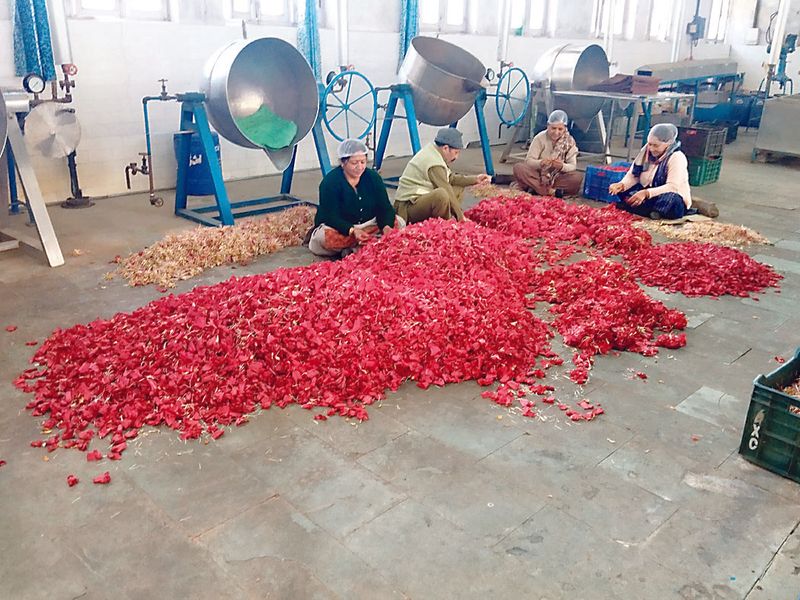The Trans-Giri region of Sirmaur district, known for its dense forests and rich biodiversity, is witnessing a spectacular bloom of Buransh (Rhododendron arboreum) flowers. These striking red blossoms, which appear between March and April, are not only a visual delight but also a growing source of income for local communities.
Traditionally valued for their medicinal properties, Buransh flowers are now being processed into squash at the fruit processing centre established by the Horticulture Department, creating new economic opportunities for villagers.
Buransh: A boon for local farmers
Vinod Dolta, a subject matter expert from the Horticulture Department in Rajgarh, highlighted the increasing market demand for Buransh-based products. Rural families collect the flowers in large quantities and sell them to the processing centre, where they are converted into squash—a chemical-free, health-boosting beverage. The growing preference for organic and natural products has further enhanced the value of Buransh in the market.
Buransh has long been recognised in traditional Himalayan medicine for its heart-healthy properties, ability to regulate blood pressure, and antioxidant benefits. The naturally refreshing taste of Buransh squash makes it a popular summer drink, and since the flowers grow wild without human intervention, the final product is entirely organic and free from pesticides.
Economic impact and growing market
The economic impact of Buransh harvesting has been significant for many rural families. Flowers are purchased at Rs 28 per kg at the processing centre, providing a steady source of income. Jagdish Thakur, a Junior Assistant at the Centre, reported that around 3,000 quintals of Buransh flowers have already been procured this season. The flowers undergo careful extraction to preserve their medicinal properties before being processed and bottled as squash for distribution.
The success of Buransh-based products underscores the potential of forest-based industries in boosting rural livelihoods. Unlike conventional cash crops that require intensive farming, Buransh harvesting allows villagers to earn a living without harming the forest ecosystem.
Expanding horizons: A future beyond squash
With the increasing demand for organic and natural health beverages, Buransh squash has the potential to reach national and international markets. Experts suggest that proper branding, quality control, and expanded distribution networks could further enhance its commercial value.
Beyond squash, there is also potential for diversifying Buransh-based products into herbal teas, syrups, and medicinal extracts, which could create additional employment opportunities and promote local entrepreneurship.
The transformation of Buransh from a wildflower to a commercially valuable product demonstrates the potential of sustainable agro-based industries in Himachal Pradesh. As more villagers engage in its collection and processing, Buransh is poised to become a key contributor to the region’s economic development—serving as a model for how traditional resources can be utilised in an eco-friendly and economically viable manner.










